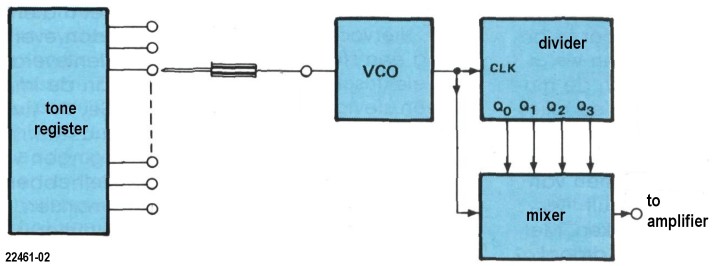Small Circuits Revival (29): Pocket Synthesizer (part 1)
on

idea: Elex Team
Pocket Synthesizer (part 1)
To prevent any disappointments later on: no, we're not describing a professional synthesizer for DIY construction here – such a thing is miles beyond the scope of the Small Circuits Revival series. This here is a small circuit (hence the ‘pocket’ in the title) that helps to explain the operating principle and can serve as an inspiration for your own designs.
Let's start with the block diagram – in the next episode we will translate that into ‘real’ electronics. In the figure below you can see the functional parts that make up the synthesizer.

The heart of the synthesizer (of every synthesizer) is formed by a voltage controlled oscillator (VCO), which generates a frequency that depends on the magnitude of the control voltage that is applied. These control voltages have to be accurately adjusted, of course, to prevent the synthesizer from sounding off key!
The control voltages are generated by the block ‘tone register’: 13 voltages in total, in succession C-C#-D-D#-E-F-F#-G-G#-A-A#-B-C. The output signal from the VCO is split into two: one path supplies the frequencies (tones) of the highest octave: this signal goes straight to the mixing stage. The other path first leads to a binary divider that divides the frequency by 2, 4, and 16 (the ‘sub-octaves’) and then also continues to the mixing stage.
That mixing stage comprises switches and potentiometers, and are used to mix the signals from the VCO and divider with each other in any way you desire, in order to produce interesting sound effects. The output signal finally goes to an audio amplifier (which is not part of this project) and will provide a powerful ‘sound’ .
Briefly returning to the block diagram: you are probably wondering what that strange thing between the VCO and tone register is. Well: not everyone will have a usable (salvaged) keyboard on hand and building one yourself is not that straightforward. Our ‘keyboard’ therefore consists of small pieces of metal that are touched with a meter probe in the correct order and appropriate tempo...
To be continued!


Discussion (0 comments)